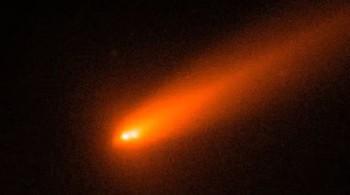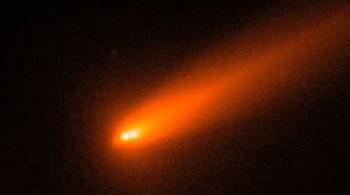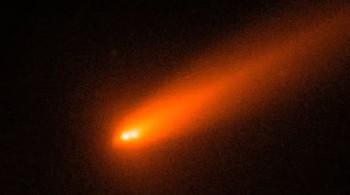
Comet C/2025 K1 (ATLAS) breaks into 3 after coming close to Sun
Comets have always been a source of fascination for astronomers and space enthusiasts alike. These icy bodies, which originate from the outer reaches of our solar system, offer a glimpse into the early formation and evolution of our cosmic neighborhood. Recently, a remarkable event has unfolded in the skies, as Comet C/2025 K1 (ATLAS) has broken into three distinct pieces after its close encounter with the Sun. This extraordinary occurrence has been captured by astronomers using Italy’s Copernicus telescope, providing a unique opportunity to study the dynamics of cometary fragmentation.
The Comet C/2025 K1 (ATLAS) was first discovered in May 2025 by the Asteroid Terrestrial-impact Last Alert System (ATLAS) survey, a NASA-funded project designed to detect near-Earth asteroids and comets. Initially, the comet was expected to be a relatively small and unremarkable object, but its recent behavior has proven to be far more intriguing. As the comet approached the inner solar system, its ices began to vaporize, creating a bright tail of gas and dust that trailed behind it. However, it was not until the comet’s perihelion, or closest approach to the Sun, that the real drama unfolded.
On October 8, Comet C/2025 K1 (ATLAS) swung perilously close to the Sun, passing within a mere 1.2 astronomical units (AU) of our star. This close encounter had a profound effect on the comet’s structure, causing its nucleus to become unstable and eventually break apart. The resulting fragmentation has left astronomers stunned, as the comet has split into three distinct pieces. Two large chunks, each measuring several kilometers in diameter, have drifted approximately 2,000 kilometers apart, while a smaller, third piece can be seen to the left of the pair.
The images captured by the Copernicus telescope in Italy provide a striking visual representation of this extraordinary event. The two main fragments, which are thought to be the largest remaining pieces of the original comet, are clearly visible, with their bright, icy surfaces reflecting the sunlight. The smaller, third piece, which is significantly fainter than its companions, can be seen as a faint smudge to the left of the pair. These images offer a unique glimpse into the internal structure of the comet, revealing the complex and dynamic processes that occur when a comet is subjected to the intense heat and radiation of the Sun.
The break-up of Comet C/2025 K1 (ATLAS) is not an isolated event, as cometary fragmentation has been observed on several occasions in the past. One of the most notable examples is Comet Shoemaker-Levy 9, which broke apart in 1992 and eventually collided with Jupiter in 1994. However, the recent event is particularly significant, as it provides a rare opportunity to study the dynamics of cometary fragmentation in real-time.
Astronomers are eager to continue monitoring the fragments of Comet C/2025 K1 (ATLAS) as they evolve and change over time. By studying the orbits and behavior of these fragments, scientists hope to gain a deeper understanding of the internal structure and composition of comets, as well as the processes that govern their disintegration. This knowledge will not only shed light on the formation and evolution of our solar system but also provide valuable insights into the potential hazards posed by comets and other near-Earth objects.
In conclusion, the break-up of Comet C/2025 K1 (ATLAS) is a significant event that has captivated the attention of astronomers and space enthusiasts around the world. The stunning images captured by the Copernicus telescope offer a unique glimpse into the dynamics of cometary fragmentation, providing a fascinating insight into the complex and dynamic processes that occur when a comet is subjected to the intense heat and radiation of the Sun. As scientists continue to study the fragments of this remarkable comet, we can expect to learn more about the internal structure and composition of comets, as well as the potential hazards they pose to our planet.





